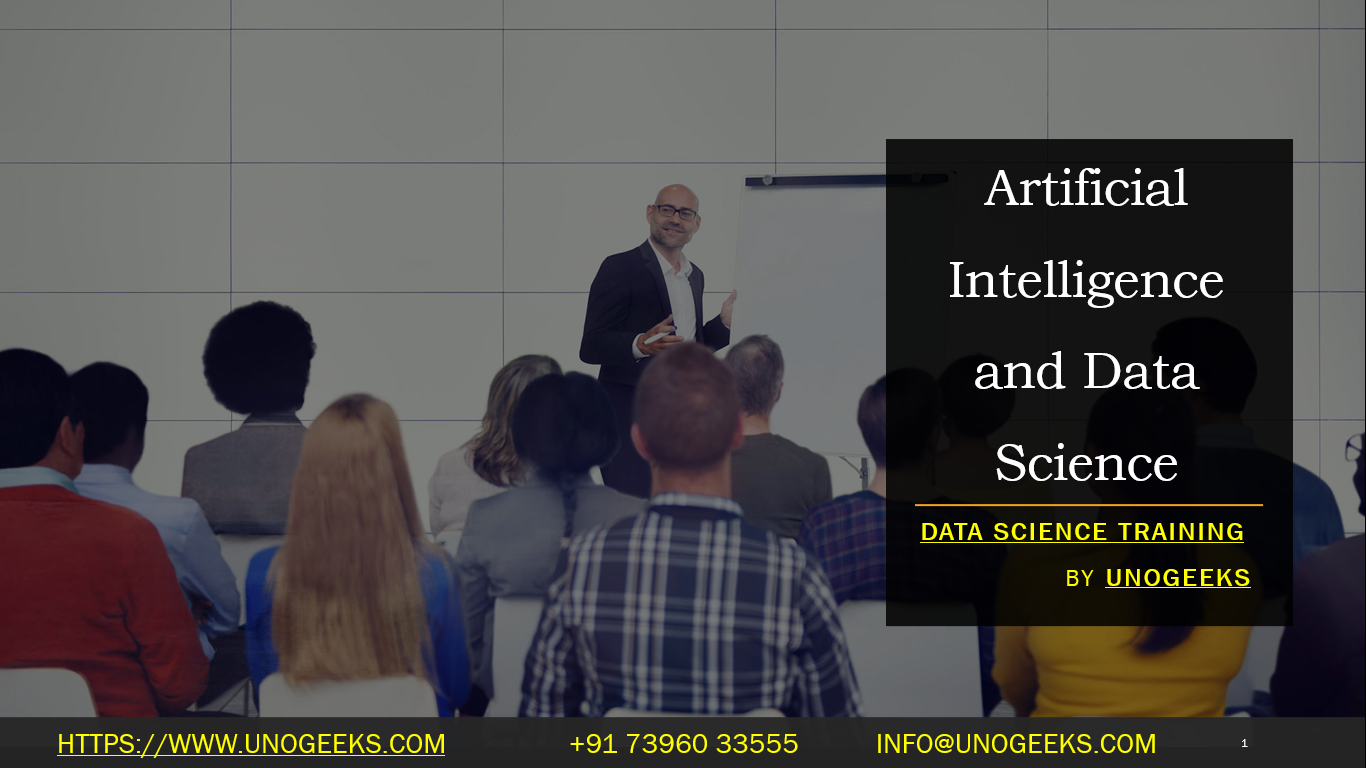Artificial Intelligence and Data Science
Artificial Intelligence (AI) and Data Science are two closely related fields that often work in tandem to extract insights, make predictions, and automate decision-making processes. Here’s an overview of both disciplines and how they intersect:
Data Science:
Objective: Data Science focuses on collecting, cleaning, analyzing, and visualizing data to extract meaningful insights, identify patterns, and make data-driven decisions. It encompasses the entire data lifecycle.
Tasks and Activities:
- Data Collection: Gathering data from various sources, including databases, sensors, web, and more.
- Data Cleaning and Preprocessing: Handling missing values, outliers, and formatting issues.
- Data Exploration and Visualization: Exploring data to understand its characteristics and creating visualizations for insights.
- Statistical Analysis: Applying statistical techniques to analyze data and test hypotheses.
- Machine Learning: Building predictive models to make forecasts or classify data.
- Data Interpretation and Reporting: Communicating findings to stakeholders.
Tools and Libraries: Data scientists use tools like Python, R, SQL, and libraries like Pandas, NumPy, Matplotlib, and Seaborn for data manipulation and analysis.
Artificial Intelligence:
Objective: Artificial Intelligence (AI) is a broader field that aims to create intelligent agents or systems capable of performing tasks that typically require human intelligence. This includes tasks like understanding natural language, recognizing patterns, making decisions, and learning from data.
Tasks and Activities:
- Machine Learning: AI heavily relies on machine learning algorithms to enable machines to learn patterns and make predictions or decisions from data.
- Natural Language Processing (NLP): Understanding and processing human language for tasks like language translation and sentiment analysis.
- Computer Vision: Teaching machines to interpret and understand visual information, such as image and video analysis.
- Robotics: Developing autonomous robots and systems capable of interacting with the physical world.
- Deep Learning: Leveraging neural networks with multiple layers for complex tasks like image recognition and speech synthesis.
Tools and Technologies: AI practitioners use programming languages like Python and specialized libraries and frameworks like TensorFlow, PyTorch, and scikit-learn for machine learning and deep learning.
Intersection:
- Data Science and AI often intersect when AI models require large amounts of data for training and validation.
- Data scientists play a crucial role in data collection, preprocessing, and feature engineering for AI projects.
- Machine learning, a subset of AI, is a common bridge between the two fields. Data scientists use machine learning algorithms to build predictive models, while AI engineers develop AI systems that incorporate these models.
- AI systems may rely on data science techniques for data visualization, statistical analysis, and data-driven insights.
Data Science Training Demo Day 1 Video:
Conclusion:
Unogeeks is the No.1 IT Training Institute for Data Science Training. Anyone Disagree? Please drop in a comment
You can check out our other latest blogs on Data Science here – Data Science Blogs
You can check out our Best In Class Data Science Training Details here – Data Science Training

———————————-
For Training inquiries:
Call/Whatsapp: +91 73960 33555
Mail us at: info@unogeeks.com
Our Website ➜ https://unogeeks.com
Follow us:
Instagram: https://www.instagram.com/unogeeks
Facebook:https://www.facebook.com/UnogeeksSoftwareTrainingInstitute
Twitter: https://twitter.com/unogeeks
